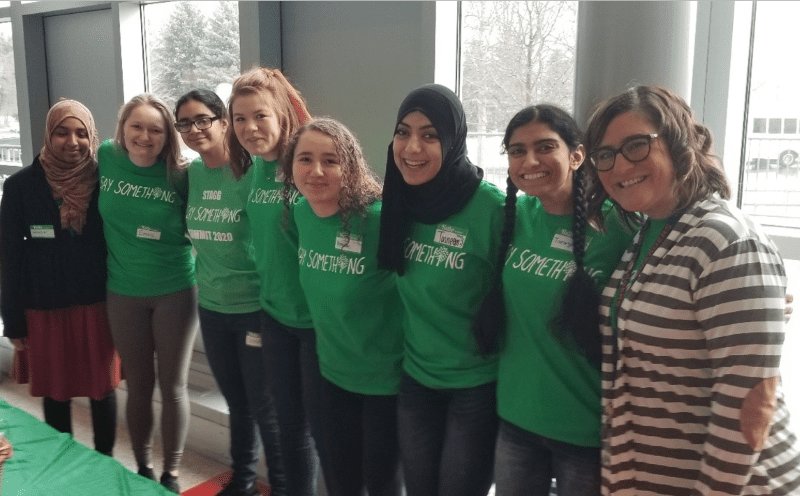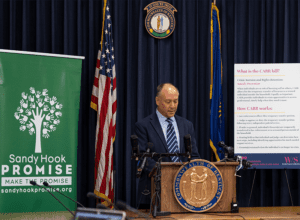Vae Champagne is the Student Programs Manager at Sandy Hook Promise where she develops curriculum and resources for the Know the Signs programs and the SAVE Promise Clubs. A former educator, she has more than two decades of experience in youth development and urban education.
Educators and students are beginning to settle into summer. This creates a welcome space to process and heals from the stress of the past 18 months of pandemic teaching and learning.
Markedly, feelings of fear and isolation have taken a toll on students and educators.
There are students who have yet to return to a school building. Instead, they’re learning remotely with virtual classes or printed packets and books delivered by teachers, counselors, principals, and bus drivers. And some students remain shut-off from educational opportunities in rural and urban settings affected by the digital divide.
On the whole, many students, educators, and families have collectively experienced suffering. The trauma may stay and resurface, becoming more pronounced for many.
Let the Healing Begin
As the process of healing begins, schools will be a nexus for this work. That’s where Social Emotional Learning (SEL) comes in.
Positioned as a mandatory program in many school systems, the SEL curriculum is essential to support this healing process.
There are three SEL priorities to consider for summer school and fall re-entry. These priorities involve allocating time, resources, and space. Key elements include antiracism and cultural competence, enhancing care for Trusted Adults; and developing platforms for youth engagement.
1. Make SEL Inclusive and Antiracist
As we reestablish student and educator relationships, now is the moment to make Diversity, Equity, and Belonging work (DEB) drive SEL practices and initiatives.
“SEL that fails to address our sociopolitical reality and combat racial and social injustice will not prepare our young people for the world they will inherit – one fraught with hate, misunderstanding, and bigotry.”
Dena Simmons, Founder of LiberatED
SEL isn’t a one-and-done presentation. When SEL programs are integrated into classroom activities and lesson plans, they play a part in dismantling dominance, perfectionism, and cookie-cutter unit plans that can perpetuate racial disparities. Without a doubt, SEL should be created using feedback from students.
There are many ways to foster an inclusive approach to your SEL curriculum. You can incorporate purposeful activities and lessons that help empathy flourish by teaching and honoring the value of identity. Another way is routinely allowing students time and space to connect. Thousands of schools across America are creating a culture of belonging with activities, like those you’ll find in the Start With Hello program.
2. Prioritize SEL for Trusted Adults
SEL for educators is gaining momentum. We’ve depended so heavily on educators being there as a consistent force. Being a Trusted Adult as an educator during the pandemic has brought up additional stressors and conflicts. Many have been helping students face the digital divide and being accessible to parents and caregivers. They’ve also been faced with students and peers overwhelmed by isolation and loneliness
Schools can support Trusted Adult social and emotional health. By providing “brave spaces” and built-in time during the school day, educators can connect, reflect, and access community resources for their well-being. New professional development opportunities can be baked into the school day.
Space to Build Resilience
Educators must be free to drop-in, convene, and learn about topics relevant to the here and now. For example, Taking Off the Mask by Ever Forward’s Founder and Executive Director Ashanti Branch and SHP’s Being a Trusted Adult workshop are places to start.
It’s also time to spruce up the teacher’s break room. For instance, some schools have created “peace rooms” for students. Give students a Project-Based Learning task to create space on campus where Trusted Adults can drop-in and decompress. If school remains virtual, try the Clubhouse model. It’s an online coffee break or tea time where teachers can drop in to share in the community.
3. Support Clubs and Youth Agency
School clubs and extracurricular programs are ideal venues for teaching SEL beyond the classroom door. Further, they can engage in peer-to-peer collaboration, mentorship, and modeling of essential SEL skills.
SAVE Promise Club is the youth leadership branch of our violence prevention programs. Throughout the pandemic, SAVE Promise Club student leaders organized Town Hall-style gatherings, anti-violence forums, and national campaigns. They’ve innovated to continue connecting with one another and built safe spaces, where Club members old and new could drop in for support and a sense of belonging.
To be sure, providing students an outlet and platform for their youth agency to drive Club initiatives and school safety events is SEL at its best.
Prioritizing these SEL skills and initiatives will help create more supportive school environments. What’s more, all students can feel a sense of belonging and ownership, strengthening opportunities for collective healing.
How You Can Get Started on Social Emotional Learning
For more information on how to bring these violence prevention programs to your school, visit Our Programs online. You can also explore more blog posts about Social Emotional Learning.


